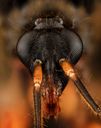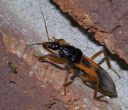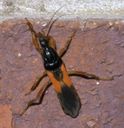Corsairs
Peiratinae
Classification
- Phylum: Arthropoda
- Subphylum: Hexapoda
- Class: Insecta
- Order: Hemiptera
- Suborder: Heteroptera
- Infraorder: Cimicomorpha
- Family: Reduviidae
- Subfamily: Peiratinae
Pronunciation
How to pronounce Peiratinae: /ˌpaɪˈrætɪniː/
These audio files are automatically generated. While they are not always 100% accurate, they are a good starting point.
Images






Summary
Peiratinae, commonly known as corsairs, is a subfamily of assassin bugs with about 350 species across 33 genera, distributed worldwide but mainly concentrated in tropical regions. It includes notable genera like Peirates and Sirthenea, with some species having specialized dietary preferences.
Physical Characteristics
Medium-sized with a length ranging from 10-25 mm. Most easily diagnosed by the transverse sulcus being set distinctly behind the middle of the pronotum.
Identification Tips
Look for the distinctive transverse sulcus behind the middle of the pronotum. Some adult females may appear brachypterous and resemble nymphs.
Habitat
Often found on the ground under rocks or at the base of grasses.
Distribution
Worldwide distribution, with a concentration in tropical areas. In the New World, present in the Nearctic and Neotropica, with 7 species in 3 genera north of Mexico.
Diet
Some species are generalist feeders on various arthropods. Notable preferences include melolonthine scarabs for Melanolestes and mole crickets for Sirthenea.
Ecosystem Role
Active hunters, preying on various arthropods.
Health Concerns
Known for their notoriously painful bites.
Evolution
The subfamily has undergone many changes since 1831 as new species were discovered.
Similar Taxa
- Sirthenea Spinola
- Peirates Serville
- Melanolestes Stål
- Eidmannia Taeuber
- Phorastes Kirkaldy
- Rasahus Amyot and Serville
- Thymbreus Stål
- Tydides Stål
Tags
- Peiratinae
- assassin bugs
- corsairs
- Heteroptera
- predators
- tropical distribution